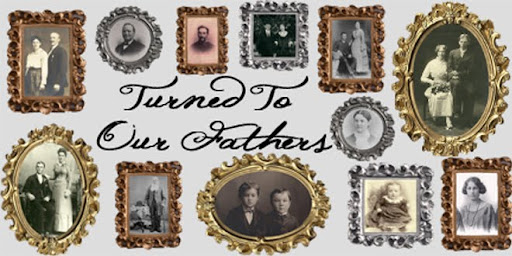ON TO MANTI
Leah B. Lyman
Manti, Utah
First Place
Azariah Tuttle stopped his wagon in front of Fort Utah. The barking of dogs announced their arrival but the team paid no attention. The unexcitable oxen relaxed and drooped their heads in sheer exhaustion. The family was also tired. The mountain roads had been more suggestive than real and walking uphill and riding down had been the family custom. Whenever it was safe Azariah’s aging mother,
Eleanor Mills Tuttle, drove the team so that he could walk with his wife, Ann Mabbot Tuttle, and their two children, thirteen-year-old Alexander and Elizabeth Ann age nine. Often they had to push with all their might to surmount a rough hill or cross a gully. Only when they came in sight of the fort did they all get into the wagon. Ann sat in the spring seat with her husband while his mother and the children sat just behind to catch the view.
The Tuttle’s had not been prepared to come west with the first company of 1847. Both Azariah and
John had found work among the farmers of Missouri, taking their pay in produce, wagons and oxen. Now the summer of 1852 found them traveling with Bishop Howell’s wagon train. They had left their youngest brother, Luther Terry, busy but happy. After he was mustered out of the Mormon Battalion, he had joined some trappers for a season. From this he obtained enough means to assist in building a flour mill needed badly by the Saints. When the wagon train reached Salt Lake City, President Young directed some to Fort Utah in Utah Valley where the city of Provo was being settled.
John drew his wagon up beside his brother’s. “I guess this is home,” he exclaimed as he jumped from the wagon.
His wife and children remained silent as did those in the other wagon. All were enraptured with the scene before them. They breathed deeply of the fresh mountain air and looked about. The golden rays of the setting sun showed the valley at its best. It was mid-September, harvest time, and farmers were still in their fields. The steep mountains, such as they had never before seen, formed a protective custody. In spite of the fact that a fort had been necessary to protect the settlers from Indians who resented the white men moving in to take their lands, they felt serenity such as they had never known.
People from the fort came out to welcome them and they were guided to a camping place where there was wood for camp fires and water for their animals and camp use. Their simple evening meal was soon over and as they were packing their things again into the “grub-box,” their old friend, Isaac Morley, known to them as Father Morley, strode into camp. He it was who had taken them to his home after the mob had burned their little home at Lima.
Greetings over, Father Morley asked about their activities since they last met. “That is all in the past and can wait for a more fitting time,” said Azariah. “Our future is here and we would like to know what is going on.” “I have much to tell,” said Father Morley, and they all settled down to listen.
“I will make it brief and to the point,” he said. “On June 14, 1849, there rode into Salt Lake City a delegation of Ute Indians led by Chief Walker. At their request they were conducted to the office of President Young. With many grunts and motions the Mormon leader was made to understand that the Indians wanted some Mormons to come to Sanpitch Valley to teach the Indians how to build homes and till the soil. In August and exploration party of four men, with Chief Walker as guide, set forth. They found a beautiful valley through ran a creek of good water. They found the soil good and the surrounding mountains gave promise of plenty of timber both for fuel and for building. Within a few day they returned reporting that everything was favorable for the building of a community.”
For a moment the speaker hesitated. So far he had only told of things in general, but when he spoke again it was in a reminiscent mood, for he was recounting experiences in which he had played a major part. “A company of some fifty families,” he continued, “was organized as soon as possible, with Seth Taft, Charles Shumway, and myself as commanders. We three were set apart to govern in Church Affairs, keep law and order, and advise in the things pertaining to the building of a new town. It was late in the fall when we left Salt Lake. We had to clear roads and build bridges as we went. We reached the chosen valley November 22, 1849, too late to make much preparation for the winter that was upon us. We camped near the creek in our wagon boxes and in a few days it began to snow. Soon it was more than three feet deep and still coming down. We were forced to seek the shelter of the south side of the hill that projected out into the valley. Some of the saints made dugouts in the hillside, while others used tents and wagon boxes for shelter.”
The recounting of these events was painful, his voice choked and tears flowed down his cheeks. “I hope I never see another winter such as that,” he went on. “The men and boys shoveled snow daily, piling it into win rows to provide shelter for our horses and cattle, and also to uncover the dry grass for our starving animals. We even sharpened the horns of our cattle to make it possible for them to break through the crusted snow and find feed for themselves and also to help them to protect themselves from wild animals.
“We lost many of our horses and cattle that winter, but it was not a total loss. We gave them to the starving Indians camping nearby and they greedily devoured them to ward off starvation. Even they had never seen snow so deep. It was as if the almighty God was testing our faith in every possible way.
“Spring of 1850 arrived. With the warm weather came a new terror. Myriads of rattlesnakes came from crevices in the hill. Hissing their way into the homes of the saints, they wriggled and writhed about in their boxes, beds, cupboards, or anywhere they could get. With the aid of pine knot torches, we killed nearly five hundred of the reptiles in one night and soon had the country rid of this latest menace. The remarkable thing was that not a soul was bitten. In spite of everything we had endured we all came through the winter in good health.”
There was a sigh of relief but no one made a comment. When the narrative was resumed it was in a lighter vein as if the crisis was past.
“In August of that year President Young visited us and christened our town Manti, in honor of one of the notable cities told of in the book of Mormon. He also named the county, changing the name of Sanpitch to Sanpete. To make sure that we did not neglect the education of our children, he furnished part of the money for the erection of a school house. Jesse W. Fox was our first teacher. Our only method of making flour was with a huge coffee grinder which was passed from home to home. So President Young helped me to make possible the erection of a small grist mill in the canyon east of town.
“On the 9th day of September 1850, by an Act of Congress, Utah Territory was organized and Brigham Young was appointed Governor. Charles Shumway and myself represented Sanpete County in the First Legislative Assembly in Salt Lake City. On the 5th of February 1851, an Act was passed incorporating the three towns now existing outside of Salt Lake City. Brownsville on the Weber River was incorporated under the name of Ogden. The town here in Utah Valley known as Fort Utah was incorporated under the name of Provo. Third was our own town of Manti. We were proud when we returned home. Soon the city of Manti was laid off, ten miles square, and divided into city lots. The settlers soon chose their lots and moved from the hillside to start homemaking in earnest.” Father Morley looked about as if trying to read their thoughts. “Well, that is about all there is to tell, only that there are plenty of city lots left. How about joining us?”
Azariah had been toying with the thought all during the recital. Turning to his brother he said, “What do you say, John?”
After a quiet conversation with his wife, John said, “Let Mother decide.”
Mother Tuttle was proud that her boys still sought her counsel, but she was not ready to commit herself yet. Instead she said, “This narrative reminds me of one of Christ’s stories. One of the last parables he gave was shortly before his crucifixion. He wanted his disciples to know that he would not be with them much longer and they would be sorrowful, but their sorrow would turn to joy when he triumphed over death, and he likened it to the most common thing in the world, the birth of a baby. Birth pains would be forgotten when the mother realized that a man had been born into the world. Likewise, the people of Sanpete went safely through their travail and a city is born. I think they need us to help care for this child. I say, ‘ ON TO MANTI’.”
Source:
http://sanpete.com/downloads/saga/Saga_of_the_Sanpitch_1.pdf












